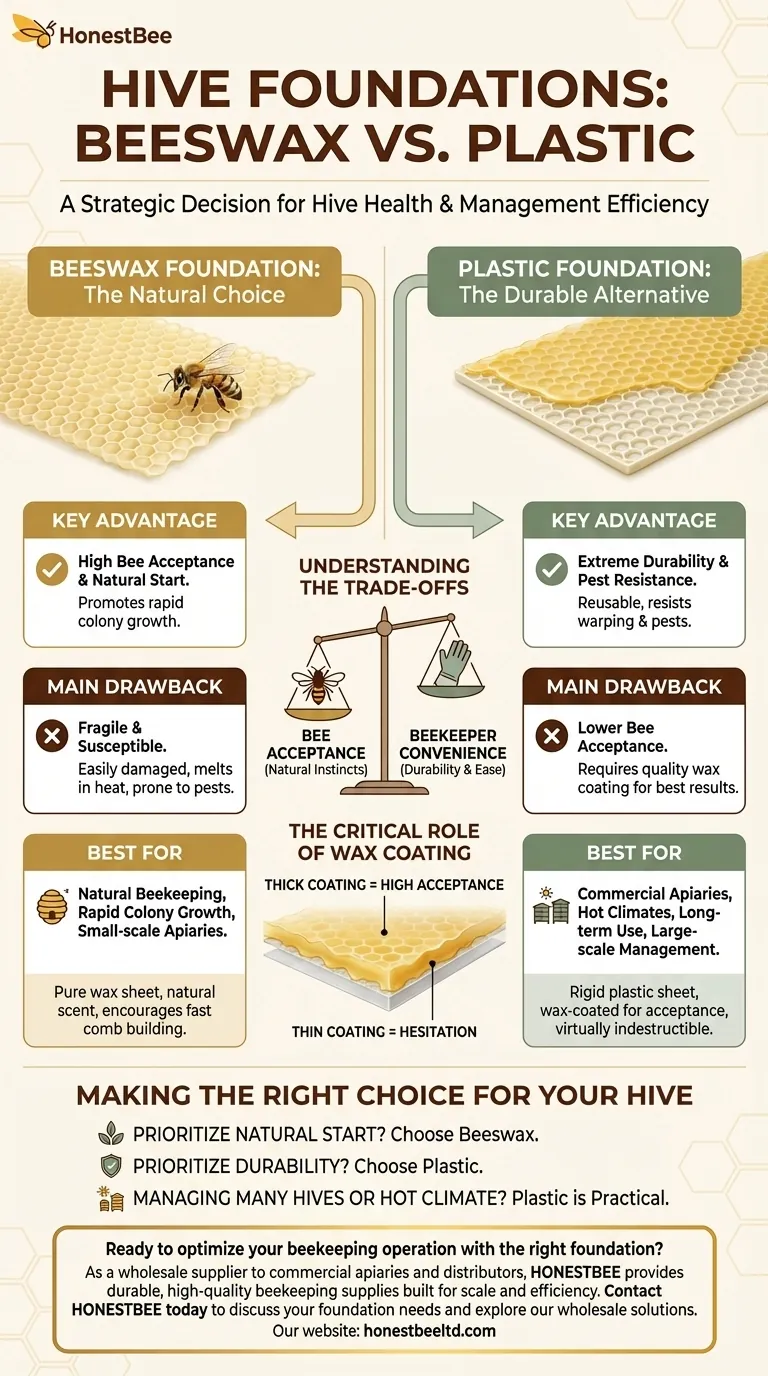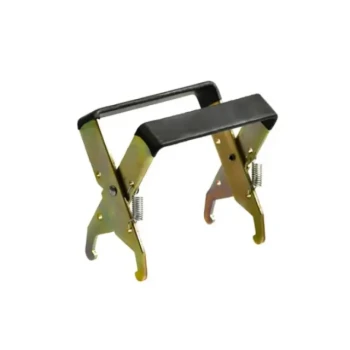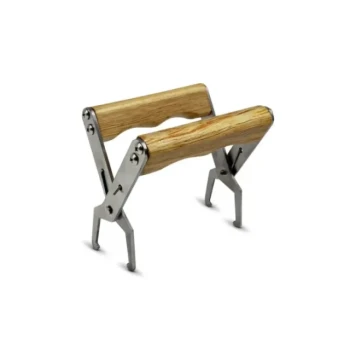The two primary types of beehive foundation are beeswax and plastic. Beeswax foundation is a sheet of pure wax imprinted with a honeycomb pattern, offering a natural and readily accepted guide for bees. Plastic foundation is a rigid, durable sheet, also imprinted and typically coated with wax, designed for longevity and ease of management.
Your choice of foundation is more than a simple material preference; it's a strategic decision that directly influences bee acceptance, hive health, your management workload, and the long-term durability of your equipment.

Understanding the Role of Foundation
A foundation gives your bees a head start, providing a clear blueprint for building the intricate wax comb where the queen will lay eggs and workers will store honey and pollen.
What is a Hive Foundation?
A hive foundation is a thin, rectangular sheet imprinted with the hexagonal cell pattern of honeycomb. It acts as a guide, encouraging bees to build straight, uniform comb within the frame.
Without foundation, bees will still build comb, but it may be crooked, cross-connected, and difficult to inspect without damaging the structure and harming the bees.
Where Does Foundation Fit in the Hive?
The foundation sheet is installed inside a wooden or plastic frame. This frame, consisting of a top bar, bottom bar, and two side bars, holds the foundation securely.
These complete frames are then placed side-by-side inside the main boxes of the hive—the brood box (for raising young bees) and the honey supers (for storing surplus honey).
A Detailed Look at Foundation Types
The choice between wax and plastic comes down to a balance between what is most natural for the bees and what is most practical for the beekeeper.
Beeswax Foundation: The Natural Choice
This is the traditional option, made from sheets of pure, rendered beeswax. Bees recognize the material and scent instantly, encouraging them to get to work quickly.
Beeswax foundation is readily accepted, often resulting in faster comb-building, which is a major advantage for a new or growing colony.
However, it is fragile. It can be easily damaged during hive inspections or honey extraction and may sag or melt in very high temperatures. It is also more susceptible to pests like wax moths.
Plastic Foundation: The Durable Alternative
Plastic foundation is a rigid sheet of food-grade plastic, almost always coated with a thin layer of beeswax to encourage acceptance.
Its primary benefit is durability. It is virtually indestructible during honey extraction, resistant to pests, and will not warp or sag in the heat. This makes it a reusable and economical choice over the long term.
The main drawback is that bees can be hesitant to build on plastic, especially if the wax coating is thin or absent. They will almost always prefer pure wax if given the choice.
Understanding the Trade-offs
Choosing a foundation means weighing the benefits of natural acceptance against the practical needs of hive management and equipment longevity.
Bee Acceptance vs. Beekeeper Convenience
Beeswax is a clear winner for immediate acceptance and encouraging the colony's natural instincts. Plastic, however, makes the beekeeper's job much easier by resisting damage and simplifying tasks like honey harvesting.
Durability and Pest Resistance
Plastic foundation is fundamentally stronger than wax. It can withstand the high rotational speeds of a honey extractor and is immune to the destructive borrowing of wax moth larvae, a common and serious hive pest.
The Critical Role of the Wax Coating
For plastic foundation, the quality of the beeswax coating is paramount. A thick, even coating makes the plastic far more attractive to the bees. Many beekeepers purchase lightly coated plastic and apply an additional layer of melted beeswax themselves to improve acceptance rates.
Making the Right Choice for Your Hive
Your goals as a beekeeper should guide your decision. Consider what you want to prioritize for your apiary.
- If your primary focus is a natural start and rapid colony growth: Choose pure beeswax foundation, but be prepared for more delicate handling and potential replacement.
- If your primary focus is long-term durability and simplified management: Choose high-quality, heavily wax-coated plastic foundation for its resilience and reusability.
- If you are in a very hot climate or managing many hives: The superior strength and pest resistance of plastic foundation often make it the most practical and cost-effective option.
Ultimately, understanding the strengths and weaknesses of each foundation type empowers you to build the best possible home for your bees.
Summary Table:
| Foundation Type | Key Advantage | Main Drawback | Best For |
|---|---|---|---|
| Beeswax | High bee acceptance & natural start | Fragile, susceptible to pests | Natural beekeeping, rapid colony growth |
| Plastic | Extreme durability & pest resistance | Lower bee acceptance (requires wax coating) | Commercial apiaries, hot climates, long-term use |
Ready to optimize your beekeeping operation with the right foundation?
As a wholesale supplier to commercial apiaries and distributors, HONESTBEE provides durable, high-quality beekeeping supplies built for scale and efficiency. Whether you need robust plastic foundations for maximum longevity or natural beeswax options for superior acceptance, we have the equipment to support your hive health and productivity.
Contact HONESTBEE today to discuss your foundation needs and explore our wholesale solutions.
Visual Guide

Related Products
- Beeswax Foundation Sheets Beehive Foundation for Wholesale
- Food Grade Plastic bee Foundation for Bee Frames
- Professional Frame Preparation: The HONESTBEE Electric Wire Embedder
- Manual Beeswax Comb Foundation Machine Wax Foundation Mill Embossing Machine
- Professional Dual-End Stainless Steel Hive Tool for Beekeeping
People Also Ask
- What happens if foundation is given to colonies during a nectar dearth? Avoid Wasted Equipment and Stressed Bees
- What is beeswax foundation used for? A Guide to Efficient Hive Management
- How do you store beeswax foundation? Prevent Wax Moth Damage and Preserve Quality
- What are the sizes of natural worker and drone cells? Guide to Natural Beehive Architecture
- How do beeswax foundations save bees time and energy? Boost Hive Productivity & Honey Yield



















